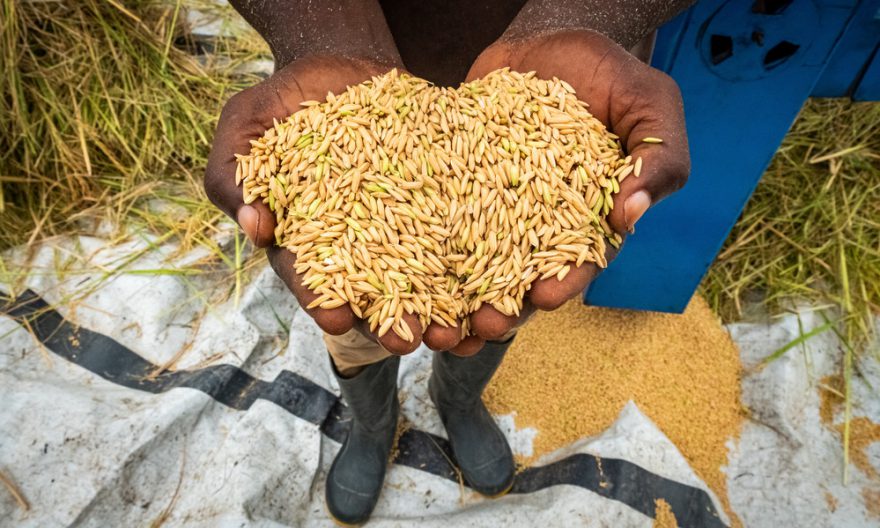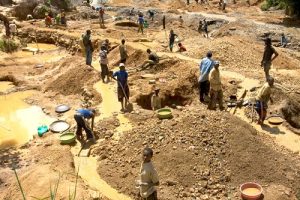
Ethiopia’s Highlands are entertaining an amazing level of agricultural revolution. The country that was once known for its coffee beans is now drawing interest from around the world for to its rapidly growing rice production sector. Ethiopia has achieved amazing results from its dedication to diversifying its agricultural sector and maximizing the potential of rice agriculture. In addition to reforming the agricultural sector, the nation’s strategic focus on this vital crop is opening the door for improved food security, rural development, and economic expansion.
A crucial approach to guaranteeing food security and bolstering the country’s economy has emerged against the backdrop of a changing environment and a growing, deeply rooted population. Ethiopia has enormous potential for rice production due to its ideal agro-ecological conditions, and its government-backed innovations have seized this opportunity to transform their communities and raise their livelihoods.
The productivity of rice cultivation has increased significantly across the nation in recent years. The need to attain food security is one of the factors pushing Ethiopia’s rice production flow. Ethiopia hopes to reduce its need for imports and guarantee a constant supply of affordable, quality food for its people by increasing its rice production.
With smallholder farmers making up the majority of the agricultural labor, the rice industry’s expansion presents enormous potential for rural development. Smallholder farmers are turning to rice production as a way to enhance their standard of living.
The increase in rice output has a positive effect on rural development and food security, in addition to directly boosting Ethiopia’s economy. Such as providing more wages, more work opportunities, and improved resistance against climate variability.
The growth of rice cultivation in Ethiopia, after three years, is estimated to be able to assist the economy by removing the foreign currency spent on rice trading, in addition to safeguarding the food security of the nation. Purchasing rice with foreign currency has various negative economic effects. Its potential to generate foreign currency is also taken in to consideration.
The demand for rice has increased as a result of changes in cuisine and urbanization, according to Taye Tadese (PhD), Director of Crop Research at the Ethiopian Agricultural Research Institute, who spoke with the Ethiopian Press Agency.
He also stated that about 70–80% of the rice he consumes is imported; a significant amount of foreign exchange is required.
On his part, Alayu Yalew (Ass.Pro), lecturer and director of the Blue Economy Center of Excellence at Bahardar University’s College of Agriculture, stated that Ethiopia should focus on increasing rice output in order to achieve food self-sufficiency currently.
He said that rice can be grown in a short area, making it a more favorable crop than other crops, and that the majority of Ethiopia’s climate and soil types are favorable for rice production. And he also indicates that it is appropriate to understand the soil resources and select a seed that is suitable for the environment in order to succeed in the field.
According to national rice research and development strategy of Ethiopia (NRRDSE), rain-fed rice cultivation potential is more than 30 million hectares. Among these, 5 million hectares are highly suitable, and 25 million hectares of land are suitable. Moreover, 3.9 hectares of Ethiopian land are suitable for irrigated rice production.
Taye mentioned that the study area has a potential to yield 60 to 70 quintals of rice per hectare; if the sector’s potential is realized, it may be able to quickly replace imported goods and export them.
Despite the fact that rice requires a lot of water to grow, effective water management is essential to its successful production. Ethiopia faces difficulties in developing its irrigation infrastructure, obtaining water, and making the most use of its water resources. Inadequate irrigation infrastructure and fluctuating water supplies can also restrict the growth and output of rice farms.
To achieve the best yields, it is also essential to have access to high-quality seeds, fertilizers, insecticides, and other agricultural inputs. Due to their limited availability, high cost, and poor distribution networks, many Ethiopian smallholder farmers have difficulty getting these inputs.
Furthermore, the sector remains to have relatively low levels of market access, inadequate market information, poor land preparation, planting, and harvesting, restricted access to suitable machinery, high expenses, and inadequate technical infrastructure and milling and drying technologies.
Ethiopia is also vulnerable to the effects of climate change, which include unpredictable rainfall patterns, rising temperatures, and an increase in pests and illnesses. These elements can worsen soil erosion and water scarcity, lower yields, and raise production risks, all of which can have a negative impact on rice production.
With Ethiopia’s rice production revolution; it becomes evident that this strategic focus on rice is not merely an agricultural endeavor but a pathway to prosperity for the nation. The government’s commitment, coupled with the resilience and determination of farmers, is driving this transformation, offering a promising future where Ethiopia becomes self-sufficient in rice production, ensures food security for its people, and strengthens its position as a regional agricultural powerhouse.
The government has been actively encouraging the development of rice for domestic as well as international markets due to realizes crop’s export potential. Ethiopia is establishing itself as a major player in the global rice trade by using its advantages in terms of price, quantity, and quality. This will open doors to higher foreign exchange revenues and improved economic stability.
The scholars noted that, generally speaking, the most effective way to raise Ethiopia’s economic output is to boost rice production and efficiency. They state that in order to maximize the food’s numerous benefits, attention should be given to how widely it is used.
Enhancing farmers’ and extension services’ knowledge and skills is essential for the adoption of better farming approaches, such as effective water management, disease and pest control, and post-harvest handling. For the rice industry to grow sustainably and to close knowledge gaps, it is crucial to enhance agricultural extension services and encourage knowledge sharing.
Despite the fact that these issues could stand in the way of Ethiopia’s revolution in rice production, they also create chances for focused investments, governmental support, and interventions. Ethiopia can realize the full potential of its rice industry, increase production, improve livelihoods, and support the country’s objectives for economic development and food security by tackling these issues.
BY FIKADU BELAY
THE ETHIOPIAN HERALD WEDNESDAY 1 NOVEMBER 2023





